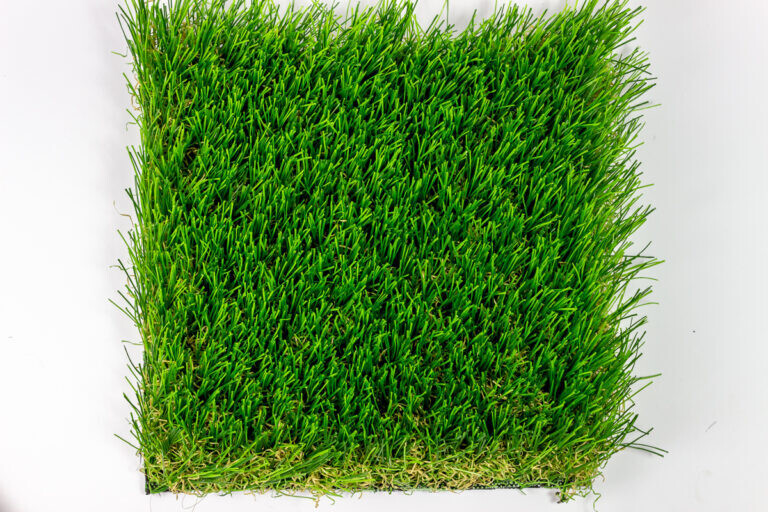FOR CALL ASSISTANCE 0795 300 081
Artificial grass gauge 20mm 8000DTEX 16800 density per sq metre
KES 1 995.00
On Sale
Normal Price KES 2 400.00 Save 17%
Product Details
FYEPC-203480-16-2
If you are planning an artificial grass project, you may need to request quotations and samples from some artificial grass suppliers, then you will see some artificial grass glossaries in the specification sheet, or on the labels of the samples. These specifications somehow determine the quality (including lifespan and performance…) and the artificial grass cost. In most cases, you can choose the appropriate products according to the supplier’s recommendations. But if you are hoping to go deeper, you need to understand what do these specifications mean.
In this article, we will tell you what do those main specifications mean.
Pile Height
The height of the pile (the blade/fiber/yarn on top of the artificial grass backing.), usually measured in millimeters (mm).
Dtex
A unit of measurement that indicates the linear mass of yarn in grams, per 10,000 meters. In other words, it relates to the weight of the yarn used to make artificial grass(with a certain density). If other specifications same, higher Dtex means higher face weight(more yarn used in the grass), better durability, denser touch feeling.
For example, 11000 Dtex, means the weight of 10000-meter yarns(yarns from the same stitch) is 11000g.
Note: Dtex is one of the main factors that will affect the face weight of artificial grass. Generally speaking, More face weight=more materials=higher price. We always provide the precise Detex(±5%), but there do have some suppliers exaggerate Dtex on the quotation sheet on the market, and you can not find this if not checking with professional equipment.
Gauge
The distance between two adjacent lines, usually using ‘inch’ as the unit.
The common gauge includes 3/8 inch, 3/4 inch, 5/8 inch, 5/32 inch…
The gauge on the picture below is 3/8 inch. 3/8inch=0.9525cm, so there are 105 lines of grass in 100cm distance (100/0.9525= 105 lines)
Stitch Rate
Number of artificial grass stitches per 100cm in the stitch line direction.
In the picture as following, there are 17 stitches in 10cm, so there should be 170 stitches in 100cm.
Density
Number of stitches in one square meter (we did not write the density on the latest version of the label for it can be calculated if gauge and stitch rate are given).
How to calculate density with the data of the gauge and stitch rate?
Take gauge 3/8 inch and stitch rate 170 stitches/100cm as an example:
1) 3/8 inch=0.9525cm, there are 105 lines in 100cm distance (100/0.9525= 105 lines).
2) In the stitch line direction, there are 170 stitches in the 100cm distance(See the below picture – stitch rate).
3) In the size of one square meter (100cm x 100cm), there are 105*170=17850 stitches. We say that the density of this artificial grass is 17850 stitches/m2.
The pile height, dtex, gauge and stitch rate work together to determine the artificial grass face weight (Gauge and stitch rate decide the stitch density, so sometimes we also say pile height, dtex, and stitch density decide the face weight, they meant the same thing). At present we do not write face weight on the label of our samples, but if needed you can check with us once you get samples.
Backing
Artificial grass backings are comprised of a primary backing and a secondary backing. Both the primary and secondary backings work together to provide dimensional stability to the entire system.
– The primary backing is comprised of woven polypropylene fabrics that allow the artificial grass fibers to be tufted into the material in rows and facilitate seaming between artificial grass panels.
Currently, all products you ordered applied PP+NET primary backing(A layer of polypropylene(PP) fabric and a layer of the net).
Customer reviews
Reviews only from verified customers
No reviews yet. You can buy this product and be the first to leave a review.
In stock
1
Save this product for later
Artificial grass gauge 20mm 8000DTEX 16800 density per sq metre
Display prices in:KES

